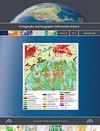新冠肺炎封锁期间城市环境中犯罪事件空间分布的变化
IF 2.4
3区 地球科学
Q1 GEOGRAPHY
Cartography and Geographic Information Science
Pub Date : 2022-01-28
DOI:10.1080/15230406.2021.2013945
引用次数: 2
摘要
摘要本文介绍了新冠肺炎疫情对克拉科夫选定犯罪类型的影响,以及2020年春季封锁期间犯罪类型的空间分布。我们将2020年3月15日至6月15日三个月期间的犯罪行为与往年同期(即2015-2019年)的犯罪行为进行了比较。为了表征它们的空间分布,我们使用了最近邻分析方法(NNA)。在下一阶段的研究中,使用核函数方法为2015-2019年的五个不同犯罪类别绘制了强度分布图。然后将来自2020的点数据层叠加在由此形成的强度层上。最后一步是研究在大流行之前和期间,生成器/引诱器如何影响犯罪的空间聚集。这两项分析使我们能够确定发生犯罪事件(“热点”)最集中地区的变化,以及生成器/引诱器对犯罪空间分布的影响。将疫情限制导致的犯罪模式变化与现有犯罪学理论进行了比较。本文章由计算机程序翻译,如有差异,请以英文原文为准。
Variations in the spatial distribution of crime events in an urban environment during the COVID-19 lockdown
ABSTRACT The article presents the impact of the COVID-19 pandemic on selected types of crime in Krakow and their spatial distribution during the lockdown period during the spring of 2020. We compared crimes committed over a three-month period from March 15 up to 15 June 2020 with crimes committed during the corresponding periods of previous years, i.e. in 2015–2019. To characterize their spatial distribution, we used the Nearest Neighbor Analysis method (NNA). In the next stage of the study, an intensity distribution map was prepared for five different crime categories in 2015–2019 using the kernel function method. The point data layer from 2020 was then superimposed on the intensity layer thus formed. The final step was to examine how generators/attractors affect the spatial clustering of crime before and during the pandemic. These two analyses allowed us to identify variation in those areas with the highest concentration of crime events (“hotspots”) that occurred as well as the impact of generators/attractors on the spatial distribution of crimes. The changes in crime patterns as a result of the pandemic restrictions were compared with existing criminological theories.
求助全文
通过发布文献求助,成功后即可免费获取论文全文。
去求助
来源期刊
CiteScore
5.20
自引率
20.00%
发文量
23
期刊介绍:
Cartography and Geographic Information Science (CaGIS) is the official publication of the Cartography and Geographic Information Society (CaGIS), a member organization of the American Congress on Surveying and Mapping (ACSM). The Cartography and Geographic Information Society supports research, education, and practices that improve the understanding, creation, analysis, and use of maps and geographic information. The society serves as a forum for the exchange of original concepts, techniques, approaches, and experiences by those who design, implement, and use geospatial technologies through the publication of authoritative articles and international papers.

 求助内容:
求助内容: 应助结果提醒方式:
应助结果提醒方式:


